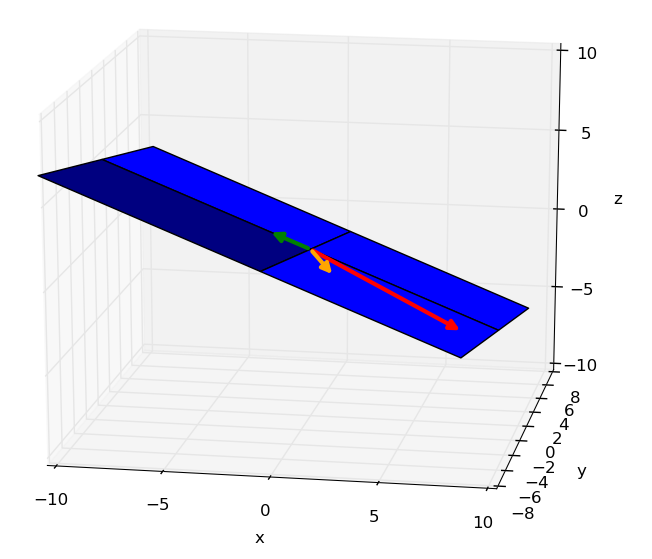1. Linear combination
If a vector can be expressed as a linear combination of other vectors, they are said to be linearly dependent.
Example I

We’d like to know if one vector in Figure 6.1 depends upon the others, as the following :
We have thus :
Let’s factorize the right hand-side of $(2)$ :
Let’s proceed with the matrix elimination as we have seen in the dedicated chapter :
From the matrix in echelon form, we get :
$ -4\lambda_3 = 12 \iff$ $\lambda_3 = -3$
Let’s replace $\lambda_3$ in the first row :
$2\lambda_2 + -2 \cdot \underbrace{-3}_{\lambda_3} = 8 \iff$ $\lambda_2 = 1$
The solution is :
Therefore any vector $\vec{v_i} \in \{\vec{v_1}, \vec{v_2}, \vec{v_3}\}$ can be expressed as the linear combination of the others.
2. Generalization
$(1)$ is obviously equivalent to $(4)$ :
More generally, we have :
If the unique solution to $(5)$ is $\lambda{_1}=\lambda{_2}=\lambda{_3}=0$ then none of the vectors can be expressed as the linear combination of the other. Otherwise the vectors are linearly dependent.
Recapitulation
If a vector can be expressed as the linear combination of other vectors, they are said to be linearly dependent. As for example :
$\left( \begin{smallmatrix} 2 \\ -1 \\ -1 \end{smallmatrix} \right) =
{\small -1} \left( \begin{smallmatrix} 1 \\ -1 \\ 0 \end{smallmatrix} \right) +
{\small -1} \left( \begin{smallmatrix} -3 \\ 2 \\ 1 \end{smallmatrix} \right)$.
To know if one vector $\vec{v_i} \in \{\vec{v_1}, \vec{v_2}, \ldots{} ,\vec{v_n} \}$ can be expressed as the linear combination of the others, the following equation has to be solved :
If that equation has as a unique solution all $\lambda{_i}=0$, it means that none of the vecteors $\vec{v_i}$ depends upon the others. In that case, the vectors are said to be linearly independent.